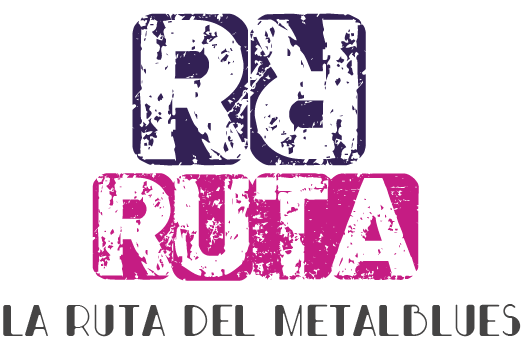El Mundo de Bambi: Especies en Peligro de Extinción
 Hoy: Especies en Peligro de Extinción
Hoy: Especies en Peligro de Extinción
Bienvenidos al “Mundo de Bambi” un jueves más, me alegra mucho tenerlos aquí de nuevo donde seguiremos aprendiendo, creando conciencia e informándonos acerca de nuestros queridos hermanos. En el audioblog de hoy hablaré de un tema que todos conocemos y hemos estudiado pero que la mayoría de nosotros no pensamos en nuestro día a día, me gustaría que hoy discutiéramos acerca de los animales en peligro de extinción, las causas y las horribles consecuencias que trae consigo. Aproximadamente 5.200 especies de animales están en peligro de extinción, según la Unión Internacional para la Conservación de la Naturaleza, el organismo internacional con mayor potestad sobre este problema. Consideramos que una especie está en peligro de extinción cuando se estima que desaparecerá completamente de la faz de la tierra. Según un documento del National Geographic 11% de aves, 20% de los reptiles, 34% de los peces y 25% de los mamíferos y anfibios corren ese riesgo. Las causas de que una especie se encuentre en peligro de extinción pueden ser naturales o producidas por el hombre y depende de la especie en particular. Las causas naturales son el envejecimiento de los animales, enfermedades y parásitos, o desastres naturales. Nuestras acciones están haciendo que las diferentes especies se enfrenten con la destrucción de su hábitat natural, la caza y el tráfico ilegal, la contaminación, la deforestación, el cambio climático, la introducción de especies exóticas, etc.
Como hemos dicho antes, la lista de animales en peligro de extinción es larguísima, algunos ejemplos de estos animales son:
-
-
Oso polar, debido a que su hábitat está desapareciendo progresivamente.
-
-
-
Rinoceronte blanco, debido a la caza furtiva, es perseguido por su cuerno.
-
-
-
Jaguar, son dos causas las que están acabando con este animal, la caza furtiva y los cambios que su hábitat, las zonas tropicales, está sufriendo.
-
-
-
Manatí, conocido como la vaca marina, es cazado y su hábitat está siendo destruido.
-
-
-
Cóndor andino, son varias las causas entre ellas destrucción de su hábitat, caza furtiva, creencias religiosas, etc.
-
-
-
Delfín rosado, por la caza y la destrucción de su hábitat.
-
-
-
Nutria gigante, ya que su piel se utiliza para hacer abrigos.
-
-
-
Guacamayo rojo, debido al tráfico ilegal.
-
-
-
Visón europeo, debido a la pérdida de hábitat y a los efectos de la introducción del visón americano y a agentes patógenos.
-
-
Rana pirenaica, fenómeno ecológico denominado eutrofización.
Las consecuencias, aunque puedan parecer obvias es necesario recordarlas, entre ellas se encuentra, la extinción definitiva de una especie, algunas de ellas siendo únicas, desaparición de ecosistemas y pérdida de diversidad genética.
Sólo en Canadá y América del Norte se han perdido 3 mil millones de aves desde 1970 a 2020.
Ahora queda preguntarnos qué podemos hacer nosotros para ayudar a salvar a las especies que corren el riesgo de extinguirse. Este es un problema de todos y todos debemos involucrarnos. El primer paso es informarnos y educarnos acerca de las especies que están amenazadas en nuestra zona, ciudad o país. Podemos visitar refugios de vida silvestre, parques y espacios abiertos, y tomar parte en acciones voluntarias en los parques y refugios locales. Reduce la utilización de herbicidas y pesticidas ya que contaminan el ambiente y se acumulan en la cadena alimentaria. Maneja con más cuidado en zonas donde haya fauna salvaje que vaya a cruzar las calles o carreteras. Recicla y compra productos sustentables, ya que así protegemos el hábitat donde los animales viven. No compres nada del mercado ilegal o productos derivados de animales en peligro de extinción.
Es importante que reflexionemos cómo nuestras acciones están afectando a los demás y las consecuencias que tendrán para poder cambiar antes de que sea demasiado tarde. Y con esto nos despedimos por hoy, gracias por escuchar y leernos, esperamos que pronto el mundo sea un mundo más libre y justo para todos los que habitamos en él.
 Endangered species
Endangered speciesWelcome to “Bambi’s world” another Thursday, I’m so glad that you are here again to inform yourself, educate yourself and learn more about animals. In today’s audioblog I’m going to talk about a theme that we all know and have studied but we don’t really think about it in our everyday life, that are endangered species, the causes and the terrible consequences.
According to the International Union for Conservation of Nature, 5.200 species are in danger of extinction. It’s considered that a species faces the danger of extinction when it could completely disappear from the face of earth.
According to an article published by National Geographic, 11% of birds, 20% of reptiles, 34% of fishes and 25% of mammals and amphibians are at risk. The causes can be provoked by a natural agent or by human actions, and they depend on the species. The natural causes are the ageing of animals, diseases and parasites or natural disasters. Humans’ actions like the destruction of habitats, illegal wildlife trafficking and hunting, pollution, deforestation, climate change, introduction of exotic species and more, are causing animals to face extinction.
Like we said before, the list of animals is immense, but here are 10 examples:
-
-
Polar bear, its habitat is disappearing progressively.
-
-
-
White rhino, which is hunted due to is horn.
-
-
-
Jaguar, which is being hunted and its habitat being destroyed.
-
-
-
Andean Condor, many causes including the destruction of its habitat, poaching, religious beliefs, etc.
-
-
-
Pink dolphin, due to being hunted and the destruction of its habitat.
-
-
-
Sea cow, the reasons are that it is being hunted and the environment destroyed.
-
-
-
Giant otter, its skin is used to make coats.
-
-
-
Red macaw, due to poaching.
-
-
-
European mink, the reasons for its decline are the destruction of its habitat in riparian areas, competition with the alien American mink and historically, extensive hunting.
-
-
Pyrenean frog, due to eutrophication.
The consequences although obvious need to be remembered, among them are the extinction of species, some of them being unique, disappearance of ecosystems and the loss of genetic diversity. Only in Canada and North America we have lost 3 billion of birds’ species.
Now we have to ask ourselves what can we do to help save species that are at risk of extinction. This is everyone’s problem and we must all get involved. The first step is to inform ourselves about the species that are threatened in our area, city or country. We can visit wildlife refuges, parks and open spaces, and take part in voluntary actions in local parks and refuges. Reduces the use of herbicides and pesticides as they pollute the environment and accumulate in the food chain. Drive more carefully in areas where wildlife is likely to cross the streets or roads. Recycle and buy sustainable products, given that this way we protect the habitat where the animals live. Don’t buy anything from the illegal market or products derived from endangered animals. It is important that we reflect on how our actions are affecting others and the consequences they will have to be able to change before it is too late. On that final note, we hope that you have enjoyed this content and that you may join us in the global fight to ensure a freer and more just world that we all wish to inhabit.


